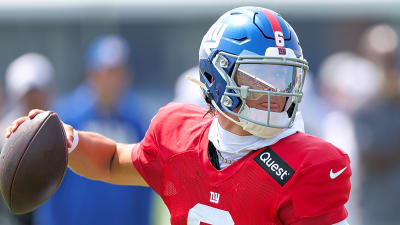When we last left the Virginia women’s soccer team, it was at the end of a rather desultory season that had concluded without an appearance in the ACC tournament and a second-round NCAA tourney loss to Wisconsin as the team posted one of the worst penalty kick showings I’ve seen in quite a while. My end-of-the-season postmortem will not be linked here, but suffice to say, several players had not returned to pre-injury form, team speed was lacking, the offense was toothless, and I was fearing that Maggie Cagle would soon transfer away.
(I was wrong about who would transfer: Cagle is staying, but it was Yuna McCormack who decamped to Tallahassee to join Florida State. I realize we’re in a whole new world with freedom of movement and abundant NIL money, but I still cannot forgive players who transfer within their conference.)
Head coach Steve Swanson, though, is not ready to hang everything up, and as he enters his 26th season at Virginia, he has reeled in the country’s #4 recruiting class. This team has two of the top five recruits in the country in Jordyn Hardeman and Addison Halpern, who is the United Soccer Coaches player of the year. Furthermore, Swanson is bringing in five of the top 50 players and eight of the top 200. And for good measure, he brought in Liv Rademaker, who has played professionally in Holland.
I’ve been concerned about team speed for half a decade now, and Swanson seems like he’s listening (LOL) as forward Helen Olszewski is a two-time 100 and 200 meter Oklahoma state champion. There’s video out there of Olszeski winning a 400m heat with an almost effortless 200m (and yes, you read that correctly) final kick. Forward Marin McCormack ran 400 and 800m relay in high school. Aniyah Collier, who got time along the back line her freshman year, and has great speed, is now listed as a forward. Returnees Sophia Bradley and Meredith McDermott have a respectable, but not game-changing pace, and how well this injection of speed juices up the attack will have a lot to say about how good the Cavaliers are this season.
While there have been some noticeable departures in coaching ranks -- Mark Krikorian (Florida State,) Anson Dorrance (UNC,) and Robbie Church (Duke) are gone – the ACC remains the strongest conference, by far, in women’s soccer. All four finalists in last year’s College Cup were ACC teams, and the ACC has won six of the last eight national championships. And all they did was add Stanford, arguably the strongest women’s program not headed by Dorrance in the past 30 years. The song will remain the same this year as the top four teams in the preseason poll are UNC, Notre Dame, FSU, and Duke. Rounding out the top 10 are Stanford at #7 and Wake Forest at #10. Virginia Tech and Virginia are at 14 and 15, respectively, with Clemson also getting votes. If you’re tallying at home, that is eight of the top 15 teams residing in the ACC.
The schedule might be a little easier this year as the women miss out on Wake (who frankly have outperformed Virginia the past 4-5 years), UNC, and Notre Dame. The team does have to make their West Coast debut as they play both Stanford and Cal, but the Hoos do get the trio of ACC doormats, Pitt, Syracuse, and Boston College.
Swanson also brought his A-game to his out-of-conference scheduling. Last year’s slate was not impressive, and it did a poor job of preparing the team for the ACC meatgrinder. What with the House settlement and schools having to find $20.5 million in loose change, the travel budgets for non-revenue sports must surely be under the microscope. Virginia has three quality programs in their backyard: Penn State, a perennial top 10 program; Georgetown, a top 25 program the past couple of years; and West Virginia, a top 30ish program for most of the decade. Virginia needs a larger dose of these programs and less of the William & Marys and Americans of the world. And this year, Swanson has got all three teams on the schedule.
For the third consecutive year, Swanson has also chosen to schedule only seven OOC games (he could play up to eight) to give his team more recovery time as they head into ACC play. I think it is a good call. Teams are trending this way; FSU is only playing six non-conference games this year.
The team itself is led by midfielder Lia Godfrey, who is going to be a quality pro, and winger Maggie Cagle. Godfrey is one of the more feared midfielders in the country with a glorious long-range shot, but it took her forever to get up to game speed last year after having sat out an entire season with an ACL injury. Cagle is the prototypical Swanson winger who is crafty and reads the game beautifully. She’s not a goal scorer, though, so when she leads your forward line, as she has the past two years, it means that the rest of the strikers aren’t pulling their weight. The Cavs only scored 30 goals last season, which is in line with a 9th-place ACC team. Which is exactly where they finished.
The midfield is more of a question mark than it has been in any years since I’ve been covering these Hoos. Alexis Theoret, who was the team’s fulcrum the past three years as a defensive center mid, has graduated. Yuna McCormack is gone. Jill Flammia, who has a nose for a goal, missed all of last season, and given recent team history, I’m skeptical as to what kind of force she can be. And based on last year’s roster, Ella Carter, who seems in line to fill Theoret’s very large shoes, is going to struggle to provide the same consistency.
Along the backline, Laney Rouse returns for her redshirt fifth year. She’s got the most speed on the team and last year I expected her to slot into the center of defense in a bid to replace Talia Staude. She stayed out wide, however, and I expect more of the same this year. The two center-backs look to be Tatum Galvin and Kiki Maki. Both were highly-ranked, woefully underplayed defenders until this past year, when they were the most improved players on the team. It proves that Swanson and Co never stop coaching, and in this day of perpetual free-agency, it is gratifying to see their growth. Maybe Jordyn Hardeman follows in Talia Staude’s footsteps and secures the starting center back role as a freshman.
Victoria Safradin is the keeper and came to Virginia as the #1 keeper of her class and with US U17 and U19 experience, but I think she’s chosen to play for Croatia and she was on their squad for Euro qualifying. She’s a reliable keeper whose distribution, frankly, sucks. Virginia struggled mightily to advance the ball out against the press and Safradin played her part in that.
Which brings me to my second point of emphasis (team speed being the first.) This team plays very deliberately, refusing to take quick throw-ins or free kicks. Swanson wants these Hoos to be very deliberate bringing the ball out of the back when realistically, they didn’t have the skill to do so. The Cavs were frequently bossed in midfield, and that was with Theoret. If Virginia doesn’t change their approach – which is hard to do when your coach is set in his ways – or add a wrinkle or two, this could be a very long season. Like any of the last couple of years.
The season begins with a pair of scrimmages against Wake Forest and DC Power this week and then in earnest with the opener against West Virginia in Morgantown on Thursday, August 14th at 7:00pm.
It’s a long season and the women have a lot to prove having missed the last two ACC tournaments. I’ll be with them every step of the way and I hope you come along for the ride.
More must-reads:
- Texans S Jimmie Ward arrested for allegedly violating bail
- Steelers' Aaron Rodgers tries to silence concerning report from training camp
- The 'MLB active hits leaders' quiz
Breaking News
Trending News
Customize Your Newsletter
 +
+
Get the latest news and rumors, customized to your favorite sports and teams. Emailed daily. Always free!








